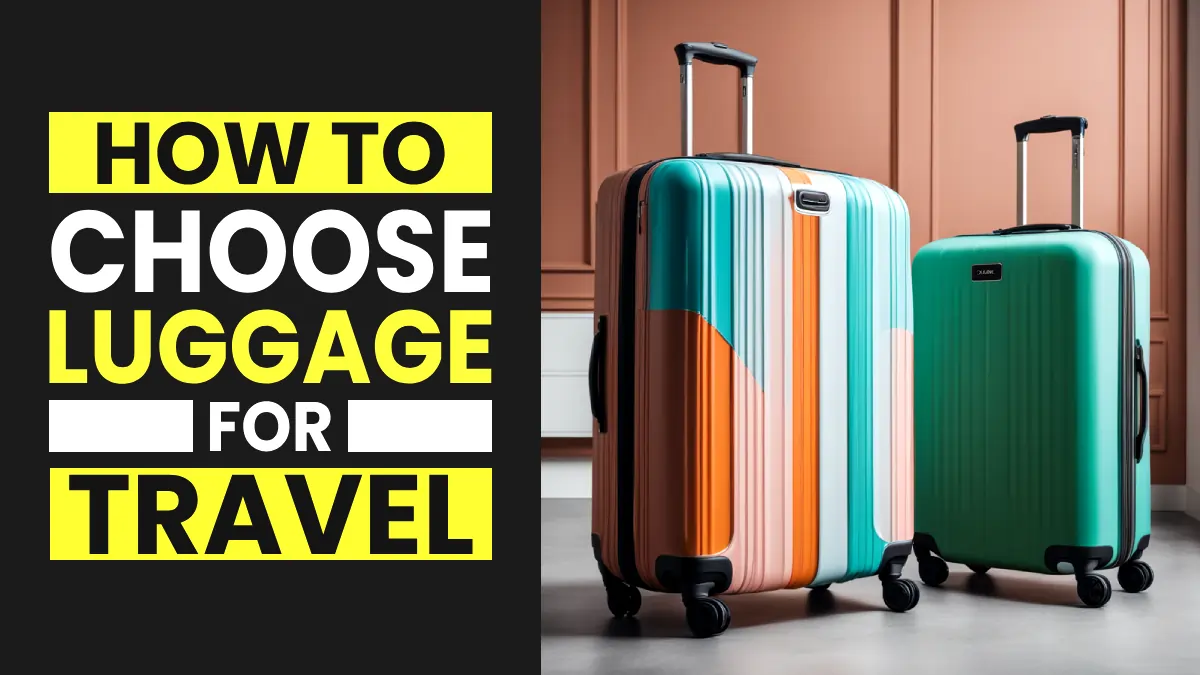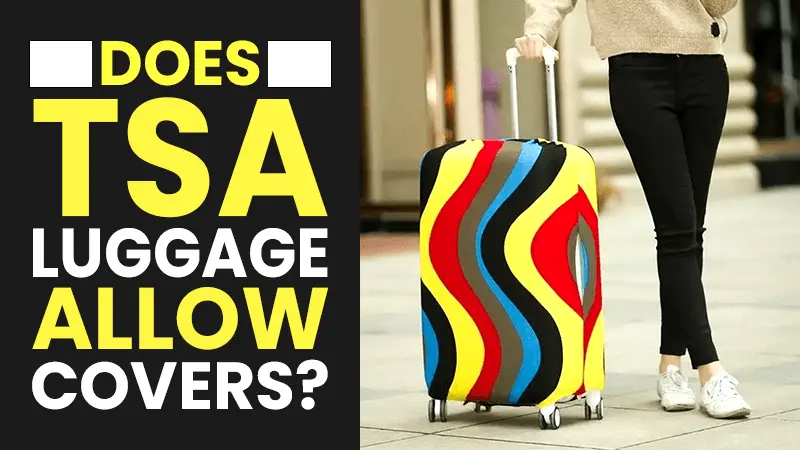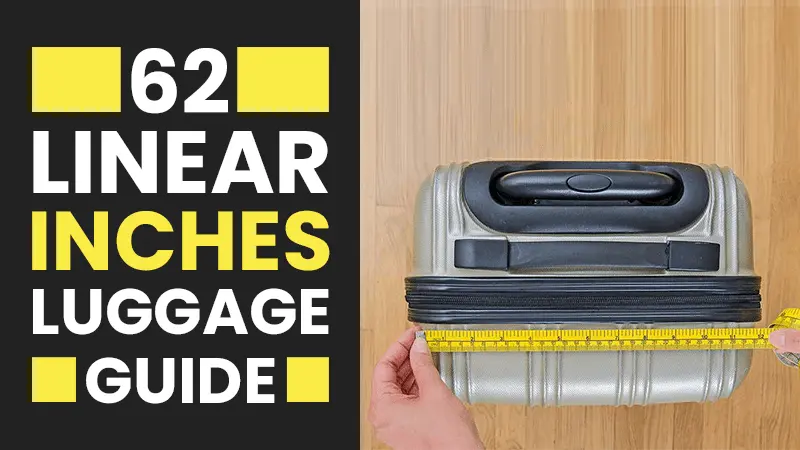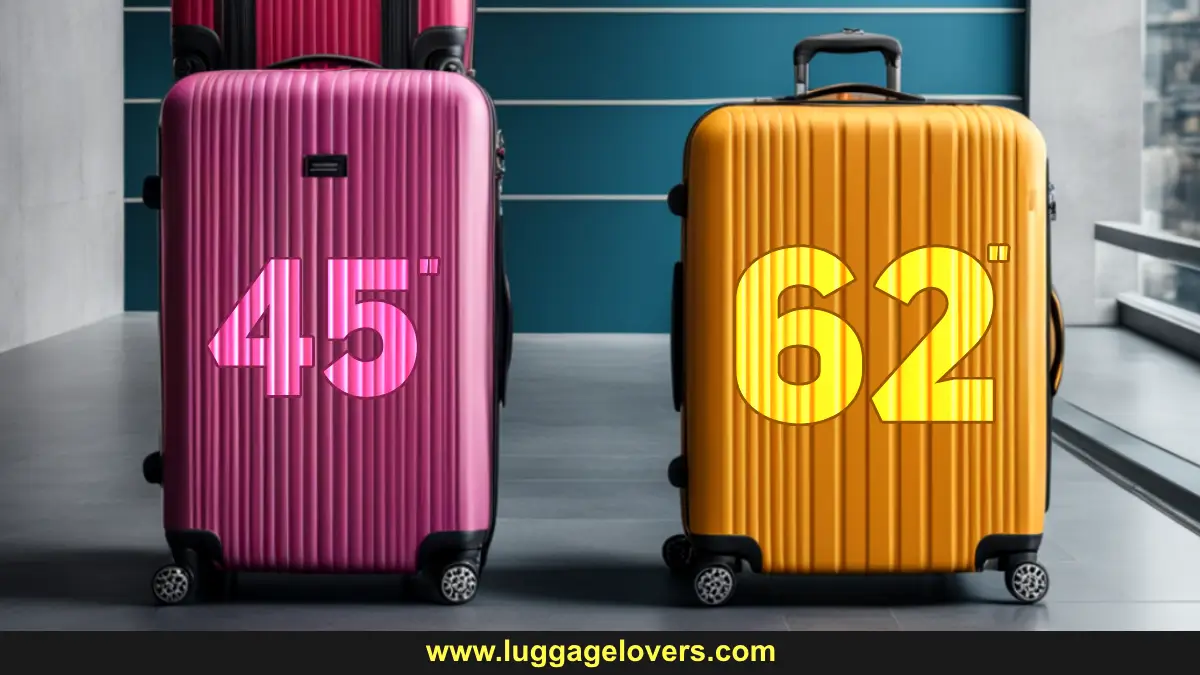How to Choose Luggage for International Travel: 2024 Expert Guide
Do you want to buy a piece of luggage but are confused about what factors to consider when choosing luggage for international travel? A good piece of luggage is one that is not only durable but also has all the essential features that you need during travel.
In this guide on how to choose luggage for international travel, we’ll tell you about different factors and parameters such as material, durability, functionality, airline restrictions, warranty, and much more.
Before you choose any luggage, make sure to judge your luggage on those parameters, which you’ll come to know below in detail.
Table of Contents
Things to Consider: How to Choose Luggage for International Travel
Material and Durability
Material is the most important element of your suitcase, and the longevity of your luggage directly depends on it. So read the material section with special dedication so that you don’t make any mistakes and ultimately choose the perfect companion for your travels.
There are mainly two types of suitcases: hardside and softside, and both come in various types of materials. Some of them are extremely durable, while others are less. So let’s find out which material is the most durable for hardside luggage as well as softside luggage and which one you should consider.
Hardside Luggage
When it comes to hardside suitcases, there are mainly four types of materials: polycarbonate, aluminum, polypropylene, and ABS. Let’s take a look at each of them one by one.
Polycarbonate
When we talk about plastic materials, polycarbonate becomes the first choice because it’s the most durable and popular plastic material. More than 50% of hardside luggage is made using this material, and it’s very flexible and lightweight in nature.
It’s flexible to such an extent that if you try to break it with a hammer or something, it’ll just bounce off. Therefore, polycarbonate is very less likely to break or crack, unlike ABS.
When compared to other plastic materials such as polypropylene and ABS material, it’s the heaviest among plastic materials, but that’s not remarkable, so weight is not an issue with polycarbonate.
If you’re a business traveler or a frequent traveler, you should definitely consider luggage made from polycarbonate, as it’s the most durable and will definitely prove to be the best companion for your travel.
Polypropylene
Comparatively, polypropylene is less durable than polycarbonate but more durable than ABS. The biggest benefit of polypropylene is that it’s the lightest plastic material and extremely flexible. In terms of nature, polypropylene is very similar to polycarbonate material.
It’s one of the least common materials used in luggage, and only 8% of hardside luggage is made of polypropylene. When it comes to durability and strength, this material is really durable and long-lasting, but when compared to PC and ABS, this material lies between PC and ABS.
Let’s talk about pricing. Similar to polycarbonate, polypropylene suitcases also come in the middle category but are a little cheaper than polycarbohydrate. However, the price difference is not huge; therefore, if you can stretch your budget a little, I’d recommend you go with polycarboante instead of polypropylene.
You may be thinking, Who should choose this material?
If you’re a semi-frequent traveler or travel 3–5 times a year, you can definitely opt for this material, but I would recommend polycarbonate luggage.
The best example of polypropylene is the Samsonite Freeform Spinner luggage, which has gained thousands of positive reviews and is loved by thousands of travelers.
ABS
The full form of ABS is acrylonitrile butadiene styrene. This material is a combination of these materials and is the second most popular material after polycarbonate. Around 30% to 35% of hardside suitcases are made of ABS material, which has the second largest market share.
But the most important thing for you to know is that this material is the least durable when compared to polypropylene and polycarbonate. That’s why almost all the popular and reputed brands never use it in their suitcases.
In terms of durability, ABS is nowhere near a polycarbonate material and is non-flexible by nature. That’s why it’s more likely to break or crack.
It’s the cheapest option on the market. If you’re someone who travels occasionally, once or twice for leisure, and is tight on budget, you should give it a try. But if you can stretch your budget a little, then I’d always recommend polycarbonate; it’s a little expensive, but it’s worth the price.
Aluminum
Aluminum is the most premium and durable material. It’s not as popular as polycarbonate or ABS, and 7 to 8 percent of hardside suitcases are made of this material. The beauty of this material is that it can’t break or crack and is extremely durable, even more durable than polycarbonate.
But there are two major disadvantages to this material; that’s why people generally don’t prefer it. One is it’s weight, and the second is it’s price. When you compare aluminum with polypropylene, the lightest material, you’ll find aluminum is around one and a half times heavier than polypropylene.
Secondly, if you buy aluminum luggage from a reputed brand like Rimova, Tumi, or Away, it’s very expensive and mostly overpriced. You can easily get around five suitcases of polycarbonate at the cost of a single aluminum suitcase.
Therefore, I never recommend aluminum suitcases because of their weight and expensiveness. You might have a question about who should consider it.
The answer is very simple: those who prefer to have something unique that stands out from the crowd, are ready to spend more, and weight is not a concern for them, should surely go with aluminum suitcases. They are worth it because once you buy them, they can stay with you for your entire life.
Softside Luggage
Softside suitcases are made with various types of material, like polyester, nylon, ballistic nylon, canvas, and leather, but the most important among them that capture more than 85% of the softside luggage market are polyester and nylon. So we’ll only discuss these two materials.
So let’s start with the most popular material, polyester.
Polyester
When we talk about softside suitcases, the first material that comes to mind is polyester. This is because it’s the most popular material for softside suitcases, like polycarbonate for hardside luggage. A study says that around 70% of softside suitcases are manufactured using polyester material.
The biggest advantage of polyester luggage is that, despite being affordable, it’s a very lightweight and durable option that is resistant to water and stains. But the important thing for you to note here is that it’s really durable, but not as durable as nylon or ballistic nylon.
People always prefer it because suitcases made of this material are always durable and don’t cost much. It’s even cheaper than nylon, so if you’re a light traveler or occasional traveler, you should definitely go with polyester luggage. Even with frequent travel, it can last for years if taken care of properly.
The best recommendations for polyester luggage are the Travelpro Maxlite 5 and the Samosnite Solyte DLX.
Nylon
Nylon is another softside material, and it’s even more durable than polyester. This material is more resistant to water than polyester. More than 18% of suitcases are made of nylon, which has the second-largest market share after polyester.
Nylon suitcases are extremely lightweight and durable and can last for years, even longer than those made of polyester. Their finish is smoother and shinier than that of polyester. But the noticeable thing is that they’re more expensive than polyester, but they’re worth it because they last longer than polyester. So the price is justified.
If you’re someone who’s a heavy traveler and travels frequently, nylon is definitely your first choice. The best example of nylon luggage is the Travelpro Platinum Elite, which is extremely durable but, at the same time, more expensive than polyester luggage.
There are many brands like Samsonite, Delsey, and Away that make both softside and hardside suitcases. But the most recommended brand for softside luggage is Travelpro, as they’re known for their softside luggage.
Also check out: 7 Things to Consider When Buying Luggage
Essential Features and Convenience
In this modern era, luggage without essential features can’t be appreciated, so features have become the most important element of your luggage and add convenience to our journey. Let’s take a look at each of them one by one.
Compartment and Organization
When it comes to convenience, the first thing that you should look at are the compartments and organization. There are generally two main compartments in hardside luggage. Check out whether the luggage is equipped with elastic straps or not. There should be at least one zipper divider so that your belongings can stay in place and won’t move during your travel.
Another thing that you should focus on is whether a laundry bag is offered with your luggage or not to keep your dry and wet clothes separate. There must be sufficient small or large pocket to organize your small items like charger, cables, diary, documents, etc.
TSA Lock
The TSA lock is a must-have feature that helps you lock your luggage, whether flying internationally or domestically. This feature is even more important in the case of checked luggage. Not only does it keep your belongings safe, but it also provides you with peace of mind and ultimately makes your journey stress-free. The default code for TSA is 0-0-0, but you can set it to your own code.
Once you set your own code on your luggage, no one can open it except you and the TSA. So before you buy any luggage, always make sure that it’s equipped with a TSA lock. Sometimes, a TSA-approved lock doesn’t come with carry-on luggage because it always stays with you.
So it’s totally your choice whether you need it on your carry-on or not, but on checked suitcases, make sure to have it; others may encounter a huge loss of your precious items.
If your suitcase lock has stopped working for any reason or doesn’t have any lock, then you can use several methods to protect your luggage from theft but these methods are not permanent solutions.
Sturdy Wheels
There are mainly two types of luggage: roller and spinner luggage. Roller luggage comes only with two wheels, while spinner luggage comes with four wheels. So if you’re looking for roller luggage, make sure it has sturdy and robust wheels.
But if you’re considering spinner luggage, there are two types of wheels that come with spinner luggage. Let’s take a look at each of them.
Single-spinner wheels
Spinner wheels are the wheels that can rotate in any direction with very little effort. You don’t need to tilt your luggage like roller luggage. Spinner wheels provide you with the facility to move your luggage beside or in front of you while keeping it in a vertical position.
Single spinner wheels mean one wheel at each corner of your luggage. These wheels are really helpful, especially on airports, hotels, and streets, and at the same time, they enhance your style and give you a professional look.
Want to know more about the types of luggage wheels? Check out this detailed guide.
Dual-spinner wheels
Dual spinner wheels are the upgraded version of single spinner wheels. That means a set of two wheels at each corner, making it a total of eight wheels on your luggage. These wheels offer all the facilities that a single wheel offers.
But on top of that, they give you more stability, even on uneven or rough surfaces. These wheels are really helpful, especially when going through tight corners. Sometimes, these wheels are rubber-coated, which really helps absorb the shock of bumps on the road.
USB Port
This is also an important feature, especially for those who mostly rely on electronic devices like tablets or phones. Definitely, there are charging stations in airports, but there is sometimes a huge crowd, and you might not get a point where you can charge your device.
Here is where this feature helps you a lot. This feature comes mostly in carry-on luggage because it always stays with you. Some brands, like Samsonite, only offer a USB port without a powerback or battery, while others, like Away, offer a complete charging kit including a powerbank.
So whatever brand you choose, you get a USB charging feature, so you can connect your luggage to the USB port and charge it, especially while waiting at the airport.
Expansion Capability
This feature is among the most essential; that’s why today most of the suitcases, including hardside and softside, come with this facility. This feature helps to pack even more, especially on the return journey.
The expansion capacity differs from model to model and brand to brand. Some brands offer it between 1 and 2 inches, while others go beyond that and offer it up to 2.5 inches. You may choose according to your needs.
But make sure that while packing more in your luggage, it can exceed the weight limits set by airlines, so make sure to stay within the airline’s size limits and regulations to avoid any additional charges.
Adjustable Handle
Every traveler has different heights, and luggage must be adjusted according to their height. To solve this problem, adjustable came into play. Today, most suitcases come with adjustable wheel handles.
Some handle with two stages, some with four, and some above four stages so that you adjust them, no matter what your height is. But the important thing for you to note here is that almost all the handles, irrespective of any brand, are a little flimsy and wobble a little.
This problem is not with only the affordable brand Samsonite but with even more expensive brands like Away and Tumi. There is a little wobble, but that is normal; you won’t face any problems with it.
Laptop Pockets
Laptop pockets are essentially for those who carry laptops with them during travel. Generally, suitcases don’t come with dedicated laptop pockets. But there are still suitcases from different brands, including hardside and softside, that offer dedicated laptop pockets.
It comes with only a carry-on because laptops are not generally carried in checked luggage. Samsonite Omni 2 Pro and Delsey Paris Helium Aero 19-inch carry-ons are the best examples of suitcases with laptop compartments.
Size and Dimensions According to Airline Guidelines
Another important factor that you must focus on is the compatibility of your luggage with the airline guidelines you’re planning to fly with. Different airlines have different guidelines for carry-on and checked luggage.
But the most common guidelines about carry-on luggage that the majority of airlines follow are that the dimension of carry-on luggage should not exceed 22 × 14 × 9 inches, which is approximately 56 × 36 × 23 cm. Some carry on following these guidelines, while others do not, so make sure to always choose luggage that does not exceed the mentioned dimensions.
For checked luggage, most airlines follow the 62 linear inches rule, which simply means that the sum of all the sides of your luggage, including height, width, and depth, should not exceed 62 inches. Similarly, some suitcases are within this dimension, while others are not, so make sure to choose check-in luggage that is compatible with the guidelines.
If you’re luggage, including carry-ons and checked luggage, exceeds the limit by 1 or 2 inches, you may not have to pay an oversized fee, but for safety, it’s highly recommended to be within the size guidelines.
Warranty and Shipping Cost
Last, and one of the most important factors that most people ignore, is the warranty, especially the shipping cost and it may leave you in trouble in the long run.
Different brands come with different warranties; some offer 5 years, some 10 years, and some lifetime. Another important thing to know is that most brands cover only manufacturing defects under their warranty terms and conditions, while a few brands offer an unconditional lifetime warranty.
But brands are very expensive and premium. So make sure to read the terms and conditions carefully. I’d recommend you go with at least 10 years of warranty for affordable brands like Samsonite, Delsey, and TravelPro and a lifetime warranty if you’re spending more than $600 on your luggage.
Another thing you should not ignore is the shipping cost. Sometimes you have to pay, and sometimes brands bear this fee. So make sure to check out who will pay for it and what the shipping cost is.







